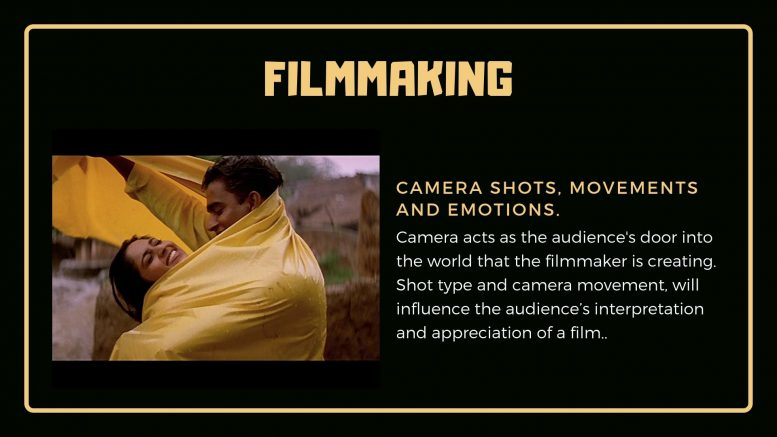You may have noticed while watching movies that the camera is almost always in motion. In the realm of filmmaking, these movements are carefully orchestrated to wield influence over the audience. When you embark on creating your own film, it’s crucial to comprehend the potential impact of specific camera movements on the intended emotion of a shot. The camera, in essence, becomes a powerful tool in conveying and evoking emotions.
The Lens as a Gateway: How Camera Movements Shape Cinematic Perception
The camera serves as the audience’s portal into the world crafted by the filmmaker. Both shot type and camera movement play pivotal roles in shaping how the audience interprets and appreciates a film. While audiences may not consciously focus on camera movements, these subtle motions wield a subconscious influence. While one need not strictly adhere to specific movements, grasping the fundamentals empowers filmmakers to harness their effects.
To illustrate, consider the following example: In a poignant scene, Sathya reunites with his long-lost lover. The sequence unfolds with shots like ‘Sathya’s mid shot,’ followed by a ‘long shot of the lover,’ transitioning to ‘Sathya’s close-up,’ and culminating in the lover walking toward the camera (Sathya). This deliberate sequence draws the audience closer to the emotional tone of the scene. Contrastingly, envision the impact if the subsequent shot after ‘Sathya’s mid shot’ was a ‘close-up of the lover’ instead!
Movements
These are the basic shot types: Extreme close-up, Close-up, Medium shot, and Long shot. These are strategically employed based on the narrative needs; for example, a Close-up effectively captures tension, while a Medium shot reveals artists’ facial expressions and body language. Although generally considered less impactful than close-ups for showcasing emotions, Medium shots are the most prevalent framing technique in movies.
The Significance of Establishing Shots in Cinematic Storytelling
The Establishing shot serves the crucial role of introducing the audience to the setting in which the action unfolds. It is frequently the opening shot in a majority of Indian movies, especially those predating the 90s. This shot sets the stage, providing a visual anchor for the unfolding story.
Experimenting
Static shot is literally a fixed, non-moving shot. Ravi Babu’s Avunu is entirely shot with a static camera. A Locked-Down Shot involves fixing the camera in one position while the action unfolds off-screen. Psychologically, this technique instills a sense of unease, signaling that something may be amiss for the characters.
Handheld Movement
Handheld movement, characterized by its dynamic and unstable nature, has the power to evoke feelings of danger and strangeness in the audience. It introduces an element of unpredictability that heightens the overall cinematic experience.
The Cinematic Power of POV Shots
POV, or Point of View shots, immerse the audience in the character’s perspective, offering a glimpse of the world exactly as the character sees it. Commonly employed in horror and crime genres, this technique, also known as a through-the-characters-eyes shot, is masterfully utilized in films like Ram Gopal Varma’s Deyyam.
Here is another example of the interconnected shot of camera movement with the emotion of the film, building upon the shots mentioned earlier in this column. The scene unfolds as the lovers reunite after a prolonged separation. The camera initiates the sequence from a distant, elevated perspective, gradually closing in on the characters. As the characters draw near, the camera mirrors their proximity, closing the gap until it reaches them at the moment they intertwine hands. Subsequently, the camera continues its intimate journey, moving even closer as the lovers embrace.
Nevertheless, the choice of camera movement is intricately linked to the specific circumstances within the story and the desired emotional conveyance. The fundamental principle guiding camera movements is that they should be meticulously crafted to align with the emotions of the characters and the overarching tone of the movie.

Cinephile. Learning the art of filmmaking. Writer. Filmmaker.











Be the first to comment on "Camera Movements and Emotions | Camera Movements Tips"